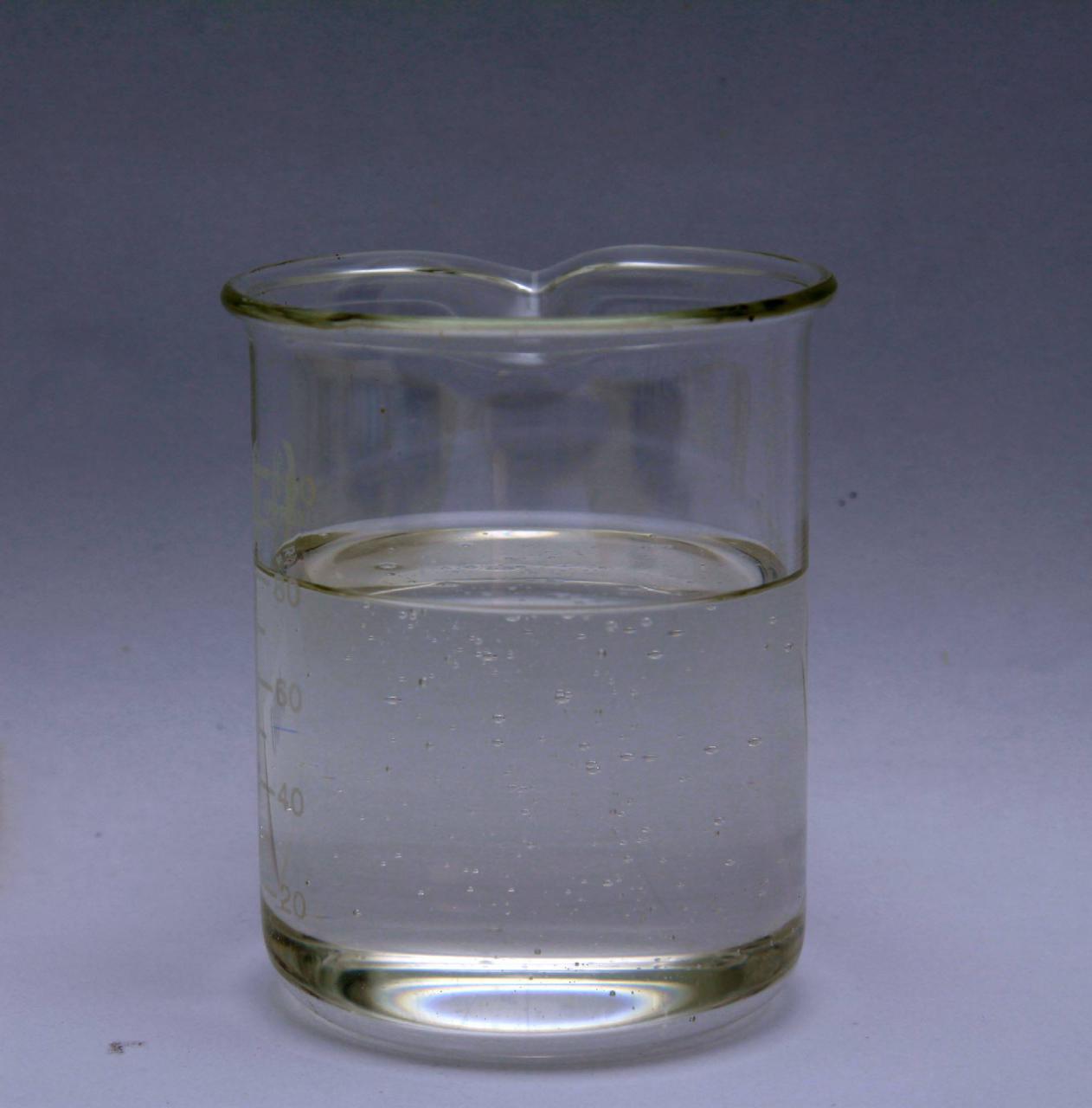[alias]cis-octadec-9-enoic acid, octadecenoic acid, red oil.
[Molecular formula]C18H34O2
[Structural formula]CH3(CH2)7CH=CH(CH2)7COOH

[Property]Oleic acid is an unsaturated fatty acid containing a double bond. The pure product is a colorless transparent oily liquid, which gradually darkens to yellow or red when exposed to the air, and gradually darkens, with an odor like lard. There are two kinds of stable type (α type) and unstable type (β type). Crystal at low temperature, oily liquid at high temperature. The relative density is 0.8905 (20°C). Melting point: α-type 13.4°C; β-type 16.3°C. Boiling point: α-type 223°C (1.333kPa) β-type 286°C (13.3kPa). The refractive index is 1.4582 (20°C), the viscosity is 25.6mpa·s (30°C), the flash point is 372°C, the iodine value is 89~87, and the acid value is 198.63. Insoluble in water, soluble in benzene, chloroform, miscible with methanol, ethanol, carbon tetrachloride, ether and other volatile or non-volatile oils. It decomposes when heated to 80-I00°C under normal pressure. When treated with nitrogen oxides, nitric acid, mercurous nitrate and sulfurous acid, it can be converted into elaidic acid, and it can be converted into stearic acid during catalytic hydrogenation. Oleic acid exists in general oils in the state of glyceride, such as lard about 51.5%, butter 46.5%, cream 18.7%, olive oil 82.6%, peanut oil 60.0%, sesame oil 47.4%, soybean oil 35.5%, cotton Seed oil 33.0%. 23.9% rapeseed oil, 83% camellia oil, etc.
[Application] Raw material for organic synthesis, used to prepare ethyl oleate, butyl oleate, glyceryl oleate and oleic acid Sodium, lead oleate and other oleic acid esters and oleic acid salts can be epoxidized to produce epoxy oleic acid ester, used as a plasticizer; oxidized to produce azelaic acid, and halogenated to produce halogenated stearin acid. In the printing and dyeing industry, it is used as a lubricant, coarse wool detergent, and viscose fiber post-treatment agent. It can be used as a soap substitute, washing silk, wool, cotton, linen and synthetic fibers, etc. It is also a good leveling agent, fiber protection agent and color brightening agent. Refined oleic acid is used for plastics, engineering plastics, and synthetic fiber nylon. 6 and nylon 9 raw materials, can also be used as industrial solvents, metal flotation agents, release agents, pesticide emulsifiers and raw materials for the manufacture of cosmetics, shampoo, carbon paper, ballpoint pen oil, typing wax paper, etc.
[Simplified method]
①Using animal and vegetable oils and fats as raw materials, they are hydrolyzed to make fatty acids, and then separated from solid fatty acids by hot pressing, and the obtained crude oleic acid is separated by freezing and cold pressing Produced finished oleic acid.
②It is obtained by saponification, acidification, separation and distillation of vegetable oil soapstock (such as cotton oil soapstock, etc.).
[Safety and Protection]This product is non-toxic. Packed in galvanized iron drums, each drum has a net weight of 25kg, 50kg or 180kg, and is stored and transported according to the regulations of general chemicals, and stored in a cool and dry place.

 微信扫一扫打赏
微信扫一扫打赏

